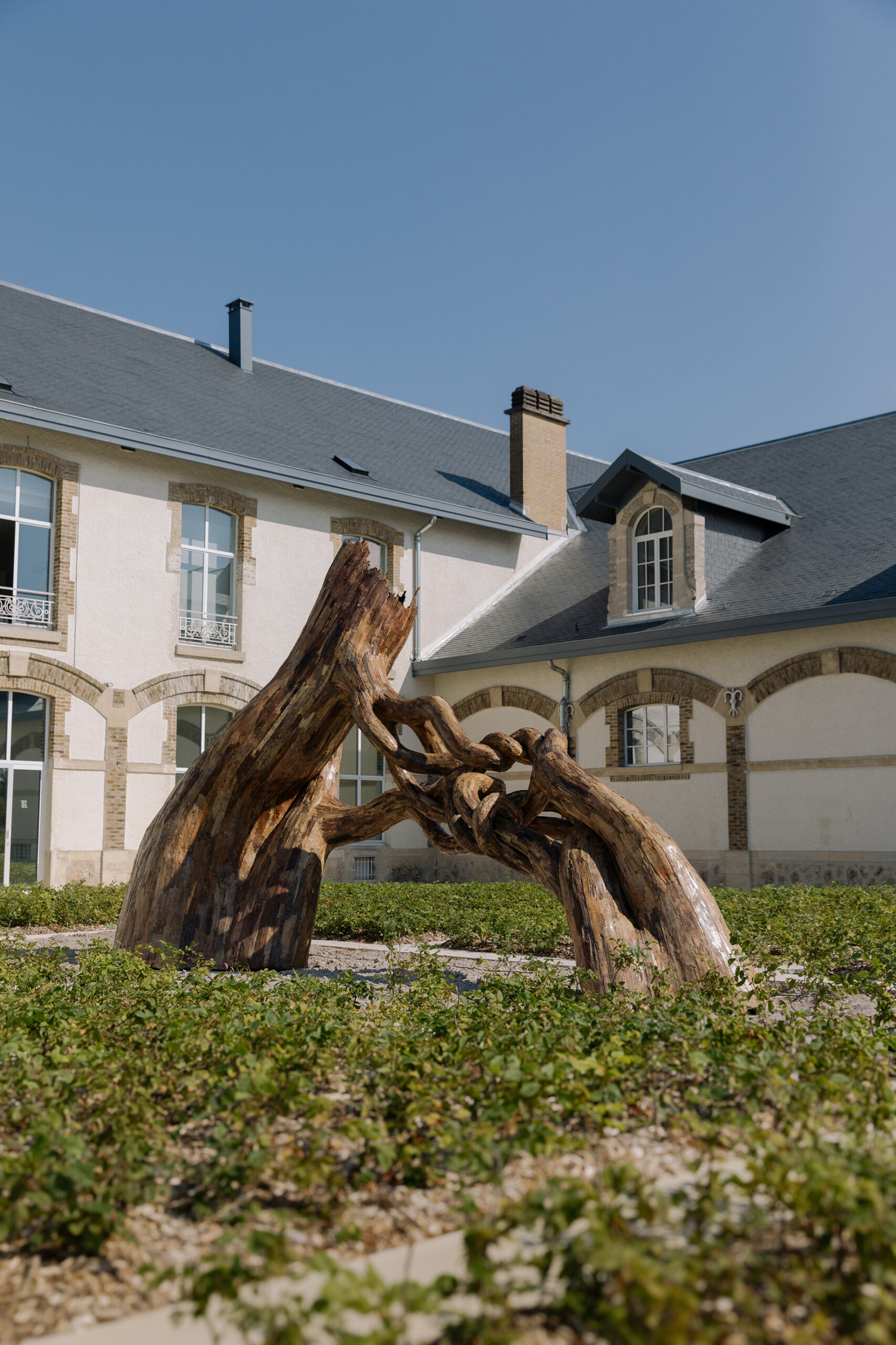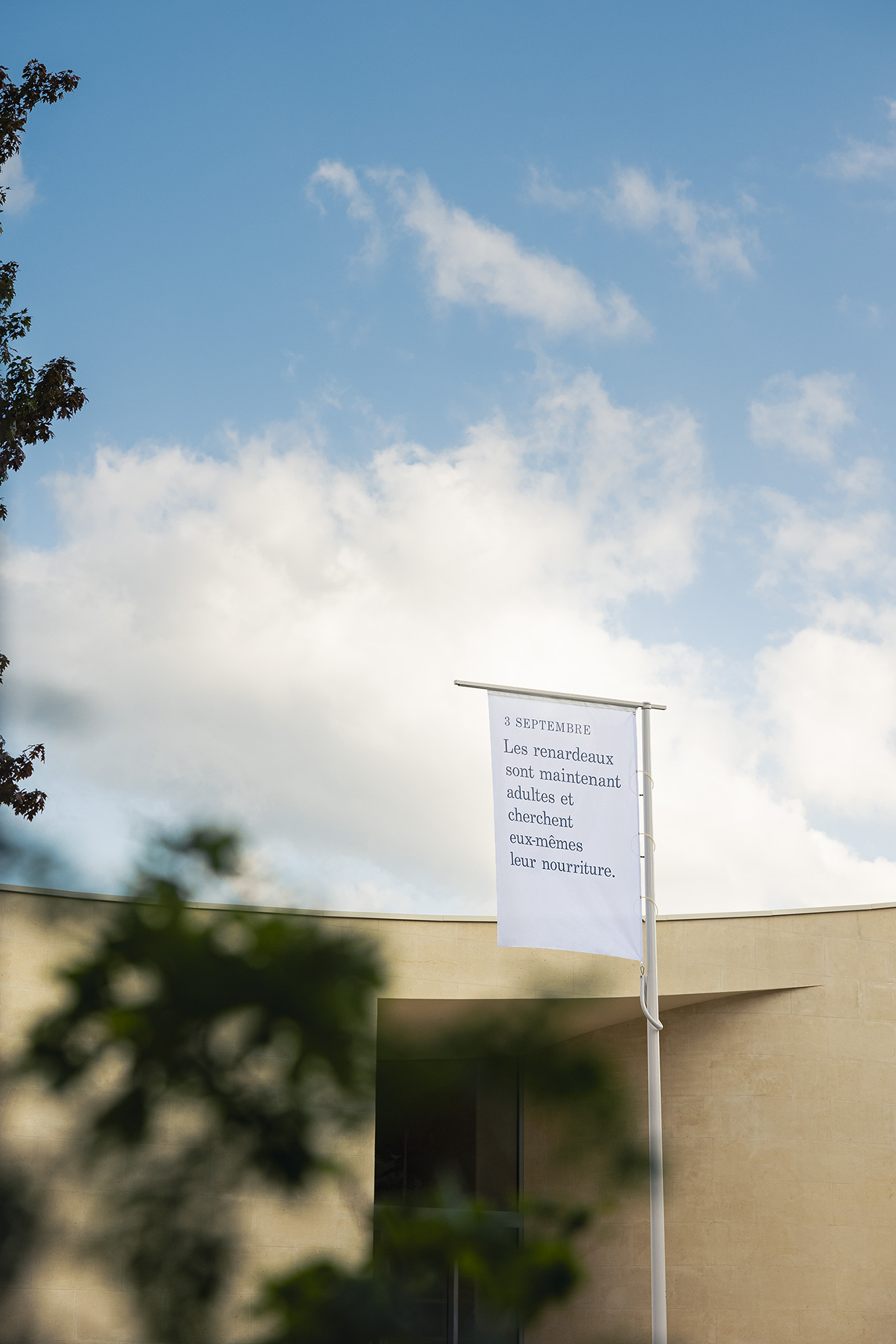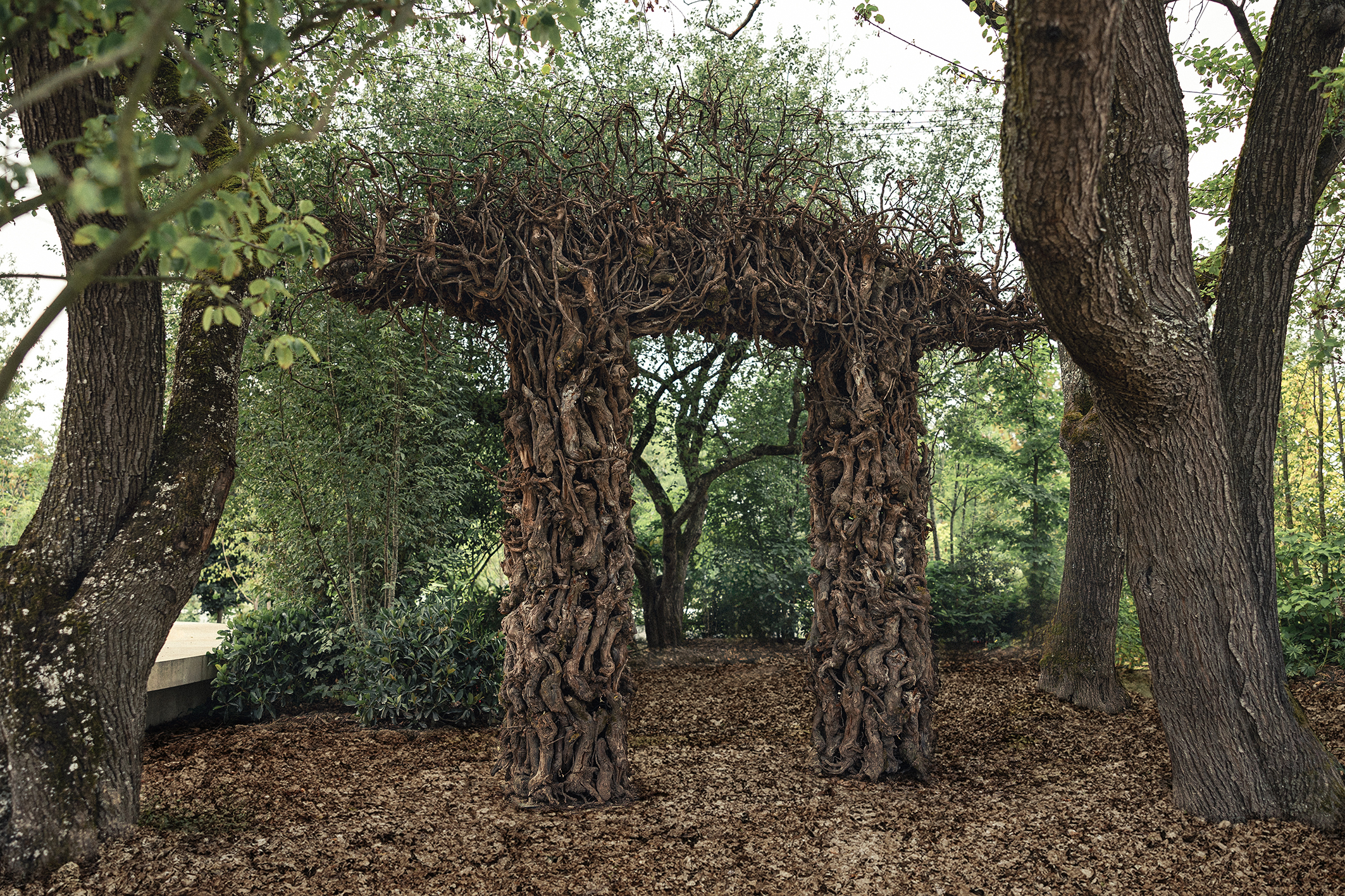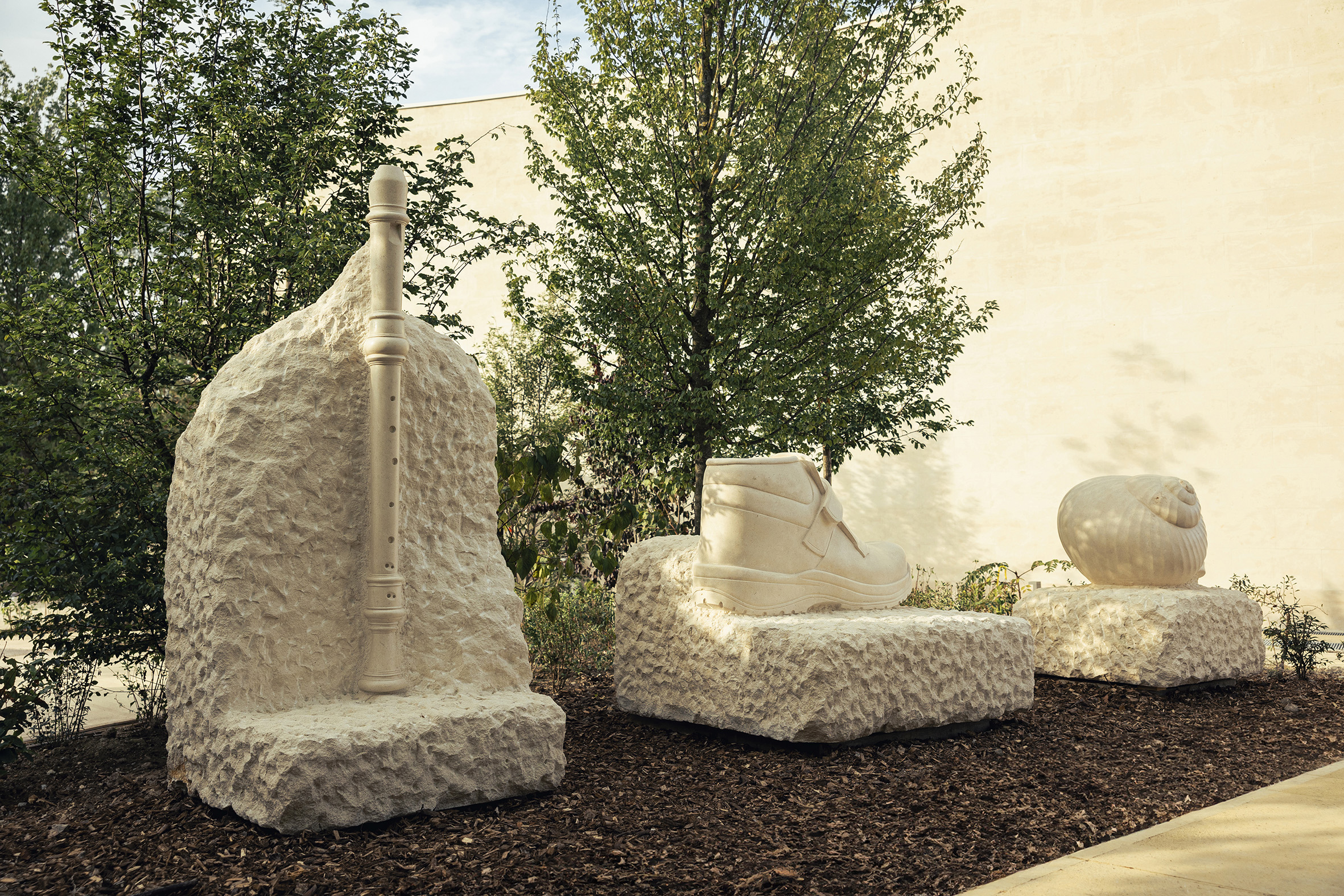Committed to a 5-year artistic programme linked to the environment, Maison Ruinart on the 3rd October unveiled “4 RUE DES CRAYÈRES” in Reims, France – a cultural space featuring an accessible sculpture park. At its heart is the Nicolas Ruinart Pavilion, a new building dedicated to art and hospitality. The outdoor art trail is inspired by the grapevine, the geology of the area and the climate crisis facing the region, and features commissioned artists such as Marcus Coates and Thijs Biersteker to bring a fresh perspective on the vineyard’s biodiversity.
Housed in a new building designed by Japanese architect Sou Fujimoto, more than twenty works of contemporary art have been added to the estate of the oldest champagne house, following a path from the landscaped grounds to the main courtyard. An artistic presence within the Maison Ruinart is long-standing, with the first collaboration taking place in 1896 with Art nouveau artist Alphonse Mucha. Every year, Ruinart works with different artists (Tomás Saraceno, Eva Jospin, Vik Muniz, David Shrigley…) at art fairs or within its medieval chalk caves, listed by UNESCO.
Entering this new cultural site via an underground passage, visitors first encounter rock before appreciating the flowing lines of the paths through the sculpted park designed by landscape architect Christophe Gautrand. The works in the sculpture park are set among a selection of plant and tree species adapted to climate change. The three-part sculpture L’Escargot, la chaussure de travail et la flûte à bec by the duo Dewar and Gicquel, a kind of contemporary archaeology in champagne-coloured Chavigny stone, suggests the relationship between nature and culture: both the slow pace of the vine and the long process of work in the fields.
Thijs Biersteker, ‘Xylemia’, photo credit © Alice Audouin; and Côme di Meglio, ‘Le chant des origines’ photo credit © Raul Cabrera
Nearby, Xylemia by Thijs Biersteker (see our interview) interacts with information on tree health, notably sap flow. Using light signals, the data is displayed in real time, captivating and stirring the emotions of the walker. From these luminous punctuations may come an awareness of the intelligence of these living beings.
Côme di Meglio’s Le champ des origines* welcomes visitors, inviting them to feel the vibration of a gong in the depths of the earth, and to think of the root life present in the soil. This living work of mycelium is destined to change with the passing of time and weather conditions, offering refuge to birds and insects.
Nearby and fully visible at night, Lélia Demoisy’s Between us (Entre nous)** installation evokes a relationship of interdependence between two maple trees: circles of light link them together, like the expression of a network of life from the ground to the canopy.

Lélia Demoisy, ‘Between us’, photo credit © Mathieu Bonnevie
Further along the pathways, we come across Capriccio by Eva Jospin** a true caprice (or micro-architectural fantasy) that recalls the role of artists in princely gardens, and who was invited by Ruinart in 2023 for a carte blanche.
In the courtyard, Henrique Oliveira’s monumental sculpture, made from plywood offcuts, constructs a giant vine stock and expresses the power of the interlacing trees of the Amazon rainforests. At the entrance to the Nicolas Ruinart pavilion, Nature calendar, a flag hoisted daily by Marcus Coates (see our interview) proposes a new calendar to the daily rhythm of nature. Each day, an event in the surrounding biodiversity is announced, from the hibernation of ladybugs to the birth of bats, creating a deep connection to a nature that is very present but often invisible to the naked eye.


Henrique Oliveira, ‘Desnatureza 6’, photo credit © Raul Cabre ; and Marcus Coates, ‘Nature calendar’, photo credit © Mathieu Bonnevie
Inside the Nicolas Ruinart pavilion, visitors can contemplate LHS 1140 c/M+M by Tomàs Saraceno (see our interview), a geometric sculpture of mirrored glass facets from his Cloud Cities series. In the summer of 2021, his post-fossil Aerocene structure took to the skies in the vineyard’s main courtyard, and its flight pattern was rendered using an augmented reality device.
Back into the garden among the vegetation, an arch by Cornelia Konrads balances on a structure made from vines that have been carefully preserved by Ruinart.

Cornelia Konrads, ‘The Arch’, photo credit © Mathieu Bonnevie
Her installation dialogues with Nils Udo’s sculpture: a grotto carved out of local limestone, nestling a monumental marble shell. It’s as much a question of its fragility as of its preciousness, like the bottles of champagne incubated in the depths of the chalk caves.
The “4 RUE DES CRAYÈRES” inaugurates a dialogue between the world of wine and art to be enriched by other works to come, continuing to explore the history of Maison Ruinart in the light of the current climate crisis that is so prevalent in the Champagne region.
*winner of the Planète Art Solidaire prize 2021
**winner of the Art Eco-conception prize 2024
Author: Pauline Lisowski
Translation: Eliza Morris
Cover image: Dewar & Gicquel, ‘L’escargot, la chaussure de travail et la flûte à bec’, photo credit © Mathieu Bonnevie
Impact Art News, September-October 2024 #50
Subscribe to Impact Art News (free)


